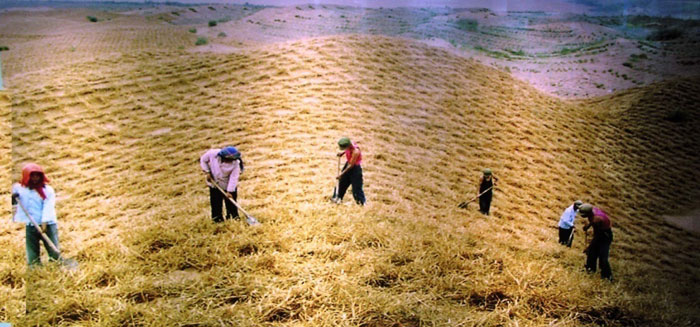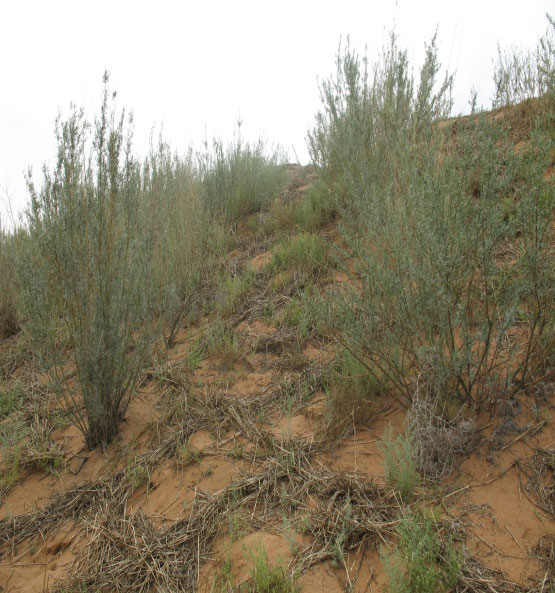Zhongwei Shapotou in Ningxia Province adopts the biological and engineering measures for the comprehensive control of railway quicksand harm. Invested by the State, the project was organized by the scientific research unit to carry out research experiment and demonstration, solve key technologies in the project construction process, and complete engineering design. The Chinese Academy of Sciences and railway, forestry departments are responsible for organizing manpower and equipment for the construction and the railway sand fixation forest farm is responsible for the later maintenance work.

Figure 1 Setting 1m*1m Half-Hidden Straw Checkerboard Barriers on Quicksand Dunes on Both Sides of Railway; Photograph: Li Xinrong

Figure 2 Drought resistant shrubbery planted within straw checkerboard sand barriers in a certain density; Photograph: Li Xiaojun
After repeated tests by project group, the construction scheme of sand prevention system composed of high vertical sand barrier fence, half-hidden straw checkerboard barriers and drought tolerable shrubbery planted in a certain density has been confirmed with a railway sand fixation system of 1km wide and 40km long, with a total area of 40km2.
This technology has been widely applied to the construction of highways and railways in mountain areas, cultural heritage protection fields like Dunhuang Mogao Grottoes protection project, Xinjiang Taklamakan Oilfield highway, Qinghai-Tibet railway sand prevention and control system, the green corridor in the Republic of Mali and others.
This project ensures the safety of railway operation and improves the regional ecological environment. At the same time, the implementation of the project enhances the community's awareness of ecological protection, and promotes the spread of knowledge and technology of sand prevention and control.